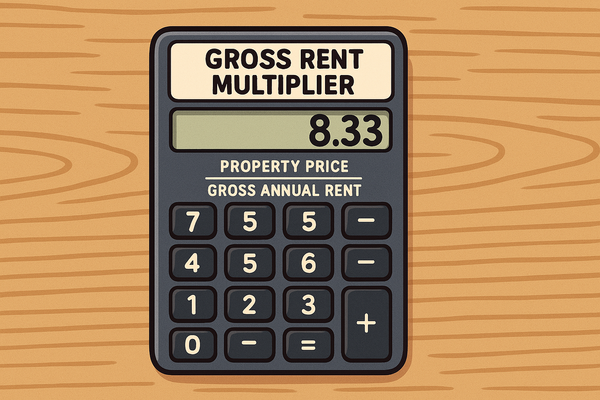New Mexico Squatters Rights Guide: Understanding Adverse Possession Laws
Required occupation period: 10 years, without significant interruptions in New Mexico, with color of title and tax payments required

From a deceased woman's home being nearly stolen from the family by a squatter in Carlsbad, to the outright theft of an Albuquerque residence leaving behind heroin needles and extensive damage, New Mexico has seen its share of shocking squatter cases.
With a required 10-year occupation period and strict requirements for tax payments and color of title, and New Mexico's vast amount of rural properties and vacation homes, understanding the complex legal framework of adverse possession isn't just academic—it's essential protection against those who know how to exploit the system and will not hesitate to do so when presented with the opportunity.
Introduction to Squatters' Rights in New Mexico
- Definition of squatters vs. trespassers in New Mexico: Under New Mexico law, a squatter is someone who occupies a property without legal ownership or permission, while a trespasser is someone who enters property briefly without authorization.
- Basic overview of adverse possession in New Mexico: Adverse possession is a legal doctrine that allows squatters to gain legal title to property after continuous occupation for a specific period under certain conditions.
- Why property owners should understand these laws: As illustrated in the true stories detailed in this article, adverse possession can (and does) happen in the state of New Mexico. For property owners in the state, it's important to understand the laws that govern this process, as well as how to prevent it from happening in the first place.
- Historical purpose of adverse possession laws: These laws originated to ensure productive use of land resources and resolve boundary disputes in rural areas of New Mexico and the broader United States.
Squatter Snippet: Real Case from New Mexico
In 2018, a shocking case unfolded in Carlsbad, New Mexico, when Willis Johnston inherited his grandmother's home only to discover squatters had moved in and claimed ownership. Elizabeth Samaniego, the squatter, had not only changed the locks and connected utilities in her name but had also begun renting out the property to unsuspecting tenants on Facebook.
She presented a tax receipt as "proof" of her right to occupy the home, confusing local law enforcement. Johnston spent months fighting legal battles and thousands in legal fees before finally reclaiming his property. The Carlsbad incident is just one of many stories that demonstrate why understanding New Mexico's squatter laws is essential for every property owner in the state.
Key Timeline: Statutory Period in New Mexico
- Required occupation period: 10 years in New Mexico
- Continuous possession requirement: Occupation without significant interruptions
- Comparison with neighboring states:
- Timeline exceptions:
- Military service may toll (pause) the statutory period
- Legal incompetence/disability may extend deadlines
Adverse Possession Timeline Comparison
| State | Required Years | Special Conditions |
|---|---|---|
| New Mexico | 10 years | Color of title and tax payments required |
| Arizona | 5 years | Varies with/without color of title |
| Colorado | 7 years | Varies with/without color of title |
| Texas | 10 years | Different requirements based on property type |
Quick Guide for Property Owners
In New Mexico, squatters rights laws are particularly stringent, requiring not just occupation but also color of title and payment of property taxes—a fact many property owners don't realize until it's too late.
The Albuquerque case where squatter Levi Monje occupied a home while the owner was away, causing extensive damage and eventually forcing the family to sell, serves as a sobering reminder of the real consequences of these laws.
With housing costs rising across the state, vacant properties have become increasingly targeted, making understanding New Mexico's specific requirements critical for homeowners.
- Know your timeline: Squatters can claim rights after 10 years of continuous occupation in New Mexico
- Documentation matters: Keep property records, tax receipts, and regular inspection logs
- Regular monitoring required: Vacant properties and inherited homes are most vulnerable in New Mexico
- Legal obligation: Self-help eviction methods are illegal under New Mexico law
- Act quickly: The longer squatters remain, the stronger their potential adverse possession claim
- Proper notices: Follow New Mexico eviction laws when removing unauthorized occupants
Prevention: Protecting Your Property
New Mexico's arid climate and vast rural areas create unique challenges for property monitoring. According to state law enforcement data, abandoned ranch properties and seasonal vacation homes in places like Carlsbad, Santa Fe, and Albuquerque are particularly vulnerable to squatting.
New Mexico courts give significant weight to evidence of regular property inspections and security measures when evaluating adverse possession claims.
In a recent ruling, the state Supreme Court noted that property owners who maintained documented regular visits had significantly stronger cases against squatters than those who left properties completely unattended.
- Regular inspections:
- Visit property at least quarterly
- Document each visit with dated photos
- Effective security measures:
- Secure all entry points with quality locks
- Consider alarm systems connected to local law enforcement
- Install motion-activated lighting around the property
- Clear signage:
- Post "No Trespassing" signs visibly in both English and Spanish
- Mark property boundaries clearly, especially in rural areas
- Property management options:
- Hire professional property management for vacant properties
- Consider short-term rental options for seasonal vacancies
- Documentation practices:
- Keep tax payment records for at least 10 years
- Maintain active utility connections
- Take dated photographs regularly of property condition
Property Risk Assessment Matrix
| Property Type | Risk Level | Recommended Prevention | Estimated Cost |
|---|---|---|---|
| Vacant Land | High | Fencing, regular inspections, clear signage | $1,000-5,000 |
| Abandoned Building | Very High | Security system, property management, reinforced entry points | $2,000-10,000 |
| Seasonal Property | Medium | Timer lights, neighbor monitoring, security system | $1,000-3,000 |
| Investment Property | Medium | Property management, tenant screening, regular inspections | $1,500-4,000 |
Removing Squatters: Step-by-Step Process
New Mexico's eviction process is governed by the Owner-Resident Relations Act (NMSA 47-8-1 to 47-8-52), which dictates specific procedures for removing unauthorized occupants.
Unlike some neighboring states, New Mexico requires formal eviction proceedings even for clear cases of squatting. Under NM Stat § 47-8-36, self-help eviction methods are strictly prohibited and can result in penalties up to three times the monthly rent or actual damages, whichever is greater.
New Mexico law enforcement generally treats squatting as a civil rather than criminal matter, making proper legal procedures essential.
- Document the situation:
- Take photos/video of occupation
- Gather deed, tax records, and other ownership documents
- Issue proper written 3-day notice to vacate
- File appropriate legal complaint:
- Petition for Restitution in New Mexico District Court
- Include all required documentation proving ownership
- Attend court hearing
- If successful, obtain Writ of Restitution
- Sheriff enforces removal, not property owner
- What NOT to do:
- Do not change locks yourself
- Do not shut off utilities
- Do not remove squatter's belongings
- Do not threaten or intimidate
- Do not use physical force
- Timeline expectations:
- Notice period: 3 days minimum
- Court processing: 2-4 weeks
- Eviction enforcement: 3-7 days after judgment
Eviction Process Timeline
New Mexico's eviction timeline follows specific requirements set forth in the state's Uniform Owner-Resident Relations Act. According to NM Stat § 47-8-33, property owners must provide proper written notice before initiating court proceedings.
Court data from the New Mexico Administrative Office of the Courts shows average processing times of 14-21 days in most jurisdictions, though rural courts may experience longer delays.
Unlike Texas, which offers expedited proceedings for squatters under certain circumstances, New Mexico requires standard eviction procedures in all cases.
[Discovery of Squatter] → [Documentation: 1-2 days] → [Notice to Vacate: 3 days] →
[Court Filing: 1 day] → [Waiting for Hearing: 10-21 days] → [Court Hearing: 1 day] →
[If successful, Wait for Writ: 3-5 days] → [Sheriff Enforcement: 3-7 days] → [Property Returned]
Total estimated timeline: 3-6 weeks
Legal Requirements for Adverse Possession
New Mexico courts strictly interpret the "OCEAN" criteria (Open, Continuous, Exclusive, Adverse/Hostile, Notorious) for adverse possession claims. The New Mexico Supreme Court has established that claimants bear the burden of proving all elements by "clear and convincing evidence"—a higher standard than the typical civil case "preponderance of evidence" standard.
In the landmark case Turner v. Bassett (2017), the court emphasized that color of title and tax payments are not merely beneficial but mandatory elements for successful adverse possession claims in New Mexico, distinguishing the state's requirements from those of neighboring jurisdictions.
- Hostile Claim
- Definition: Occupation without the true owner's permission
- Must involve color of title (some document suggesting ownership)
- Common misunderstanding: Being aggressive or confrontational is not required
- Actual Possession
- Physical occupation of the property
- Courts look for evidence of maintenance, improvements, or residence
- Must use property as a true owner would
- Open and Notorious Possession
- Visible occupation that would be obvious to the true owner
- Community awareness of occupation
- Hidden or secretive use invalidates claim
- Exclusive Possession
- Sole control without sharing with the true owner or public
- Must exclude others from using the property
- Shared use with the true owner defeats claim
- Continuous Possession
- Uninterrupted for full 10-year statutory period in New Mexico
- Seasonal use may be acceptable if consistent with how an owner would use it
- Special circumstances like military service may toll the period
Adverse Possession Requirements Matrix
| Requirement | Required in New Mexico? | Evidence Courts Accept | Common Pitfalls |
|---|---|---|---|
| Hostile Claim | Yes | Color of title documentation, tax receipts | Mistaking lease or permission as basis for claim |
| Actual Possession | Yes | Utility bills, improvements, neighbor testimony | Occasional or peripheral use only |
| Open & Notorious | Yes | Visible improvements, community knowledge | Hidden or secretive occupation |
| Exclusive | Yes | Sole control evidence, exclusion of others | Shared use with owner or public |
| Continuous | Yes | 10 years of documented presence | Significant gaps in occupation |
| Tax Payments | Yes | Tax payment receipts | Failing to pay taxes for the full period |
Frequently Asked Questions
- "Can I remove squatters myself in New Mexico?"
- No, self-help eviction is illegal under New Mexico law
- Must follow legal eviction process through the courts
- "Do squatters have to pay property taxes in New Mexico?"
- Yes, tax payment is a mandatory requirement for adverse possession claims
- Must show tax payments throughout the statutory period
- "What's the difference between a squatter and a trespasser in New Mexico?"
- Trespassers: Short-term unauthorized presence, subject to immediate removal
- Squatters: Ongoing occupation with potential adverse possession claim
- "Who should I contact first in New Mexico - police or sheriff?"
- For immediate safety concerns: Police
- For eviction enforcement after court order: Sheriff
- "Can squatters claim abandoned property in New Mexico?"
- Yes, if all adverse possession requirements are met including tax payments
- Abandonment may strengthen their claim if other requirements are satisfied
- "How quickly can I evict a squatter in New Mexico?"
- Typical timeline: 3-6 weeks
- Factors affecting timeline: court schedule, evidence quality, whether squatter contests
Decision Tree for Property Owners
New Mexico's approach to unauthorized occupants distinguishes between criminal trespass and civil squatting situations. Under New Mexico Statute § 30-14-1, criminal trespass requires knowingly entering or remaining without permission and usually applies to recent or temporary intrusions. For established occupation, civil remedies are required. According to the New Mexico State Police guidelines, officers typically will not remove occupants who appear to have established residence without a court order, even if their initial entry was unlawful.
Discovered Someone on Your Property
├── Emergency/Dangerous Situation? → Yes → Call Police
│ └── No ↓
├── Recent Entry (Less than 24 hours)? → Yes → Call Police (Criminal Trespasser)
│ └── No ↓
├── Evidence of Established Occupation? → Yes → Legal Eviction Process Required
│ └── No ↓
└── Uncertain Situation → Consult New Mexico Attorney Before Taking Action
Recent Legislative Changes in New Mexico
New Mexico's property rights landscape has seen significant legislative developments in recent years. House Bill 332, introduced in early 2025, aims to criminalize unlawful squatting and establish stronger penalties for property damage caused by squatters. The bill proposes a streamlined process for removing unauthorized occupants while maintaining due process protections.
Additionally, a 2024 New Mexico Supreme Court ruling in Rodriguez v. Martinez clarified that color of title must be held throughout the entire statutory period, strengthening protections for legitimate property owners against adverse possession claims.
- Recently Passed Laws:
- Senate Bill 218: Passed July 2024, this law strengthened landlord-tenant provisions regarding unauthorized occupants
- Impact on property owners: Created clearer distinction between holdover tenants and squatters
- Effective date: January 1, 2025
- Pending Legislation:
- House Bill 332: Currently in committee
- Proposed changes: Would criminalize squatting and create expedited removal processes
- Expected vote: Spring 2025
- Legislative Trends:
- New Mexico is following a national trend toward stronger property owner protections
- Rural property concerns are driving legislative priorities
State-Specific Considerations
- Color of Title in New Mexico:
- Definition: Written document suggesting ownership (deed, will, tax sale certificate)
- Impact on statutory period: Mandatory requirement
- Documentation requirements: Must be maintained throughout the 10-year period
- Burden of proof requirements:
- Squatter must prove all elements of adverse possession by clear and convincing evidence
- Higher standard than typical civil cases in New Mexico courts
- Recent legal developments:
- Rodriguez v. Martinez (2024) clarified color of title requirements
- House Bill 332 may significantly change squatter removal processes
- How New Mexico differs from neighboring states:
- Stricter requirement for tax payments than Arizona
- Longer statutory period than Arizona (5 years) and Colorado (7 years)
- Mandatory color of title unlike some neighboring states
New Mexico vs. Neighboring States Comparison
| Factor | New Mexico | Arizona | Colorado | Texas |
|---|---|---|---|---|
| Statutory Period | 10 years | 5 years | 7 years | 10 years |
| Color of Title Impact | Mandatory | Reduces to 5 years | Reduces to 7 years | Reduces to 5-10 years |
| Tax Payment Required | Yes | No | No | No |
| Special Conditions | Color of title, tax payments | Varies by type | Varies by type | Varies by property size |
| Strictness Rating | 5/5 | 3/5 | 3/5 | 4/5 |
Advanced Legal Process
- Court proceedings require filing Petition for Restitution with the district court
- Evidence must include clear proof of ownership, documentation of squatting
- Possible outcomes include complete eviction, damages for property harm
- Appeals must be filed within 15 days of judgment in New Mexico
- Effect on property title can be significant if adverse possession succeeds
- Special provisions exist for elderly or disabled property owners
Real-World Examples
- Carlsbad Inheritance Case: Squatter Elizabeth Samaniego claimed a deceased woman's home using tax receipts, forcing lengthy legal battle for heir Willis Johnston
- Albuquerque Security System Case: Homeowner discovered squatter Levi Monje when security cameras went offline; found extensive property damage
- Lesson learned: Regular property monitoring and immediate legal action are essential
Resources
- Current New Mexico Squatters Rights Laws:
- New Mexico Statutes Chapter 37-1-22
- Last updated: 2023
- Recent/Pending Legislation:
- New Mexico Legislature Bill Finder
- House Bill 332 status: In committee
Legal Disclaimer
DISCLAIMER: The information provided in this guide is for general informational purposes only and should not be construed as legal advice on any subject matter. The content contained herein does not establish an attorney-client relationship.
This guide about New Mexico squatters' rights and adverse possession laws is intended to provide general information and should not be relied upon as legal advice. Laws and regulations regarding property rights, adverse possession, and eviction procedures vary by jurisdiction and may change over time. The information presented here may not reflect the most current legal developments or address your specific situation.
No reader should act or refrain from acting based on information in this guide without first seeking professional legal advice. Property owners dealing with squatters should consult with a qualified attorney licensed to practice in New Mexico for advice tailored to their particular circumstances.
The authors, publishers, and distributors of this guide expressly disclaim all liability in respect to actions taken or not taken based on any or all of the contents of this document. They shall not be responsible for any errors or omissions in this information or any consequences arising from its use.
This guide is provided "as is" without warranty of any kind, either express or implied, including but not limited to implied warranties of merchantability, fitness for a particular purpose, or non-infringement.
Copyright © 2025 LandlordDoc.com. All rights reserved.





